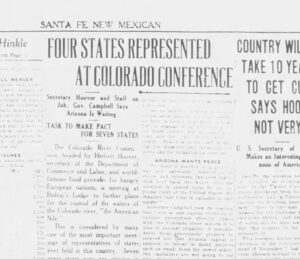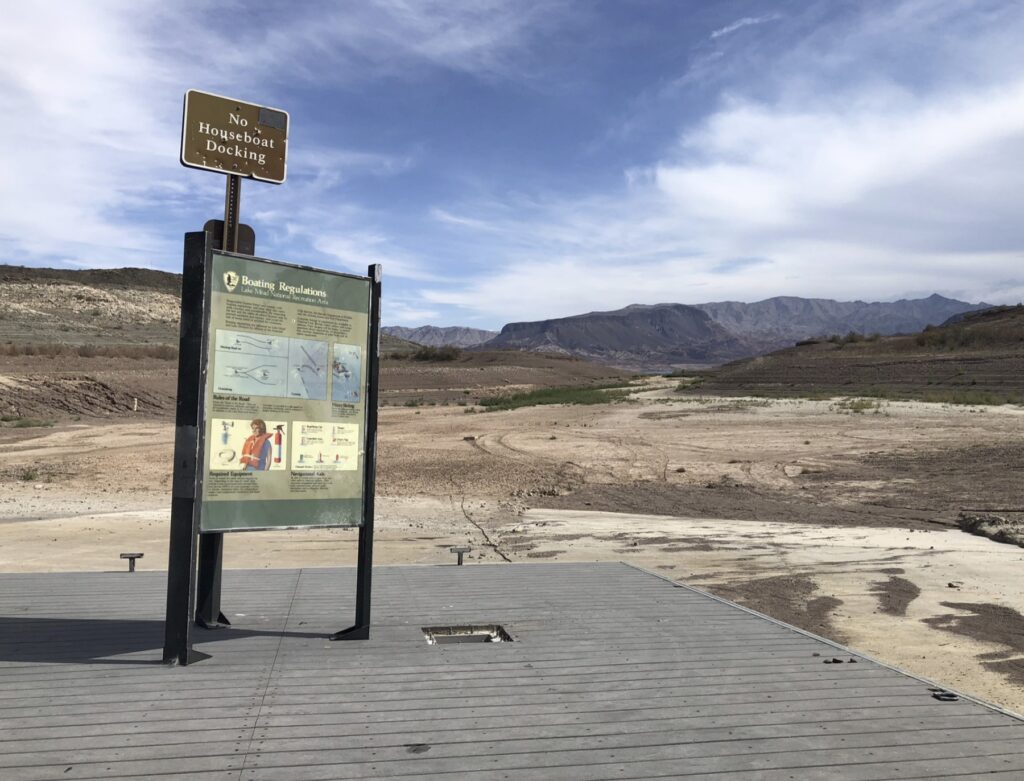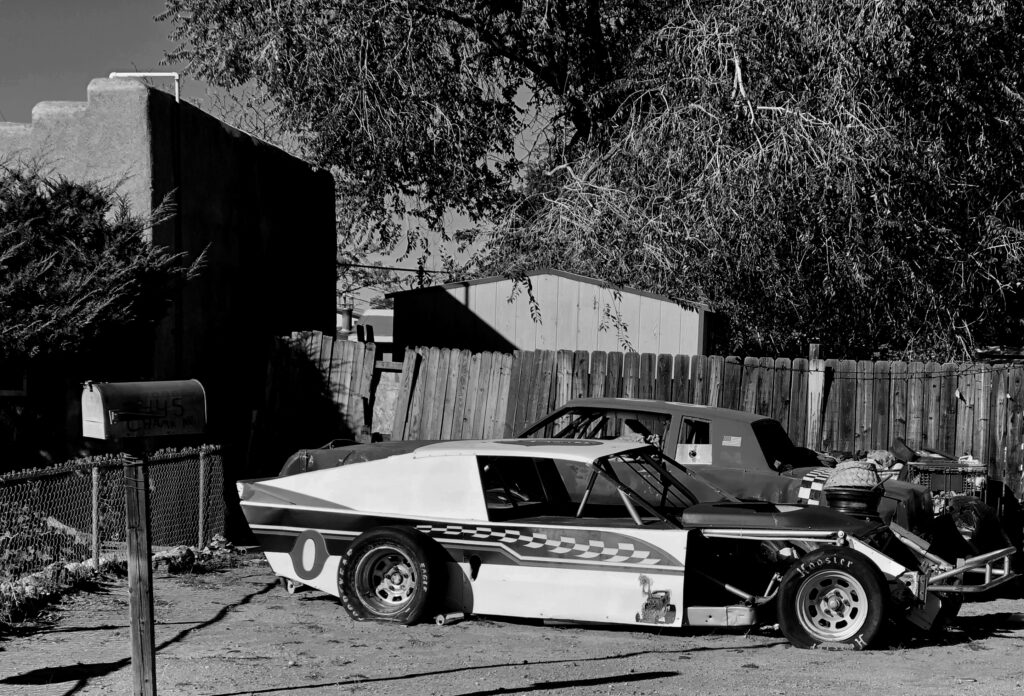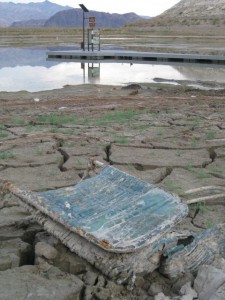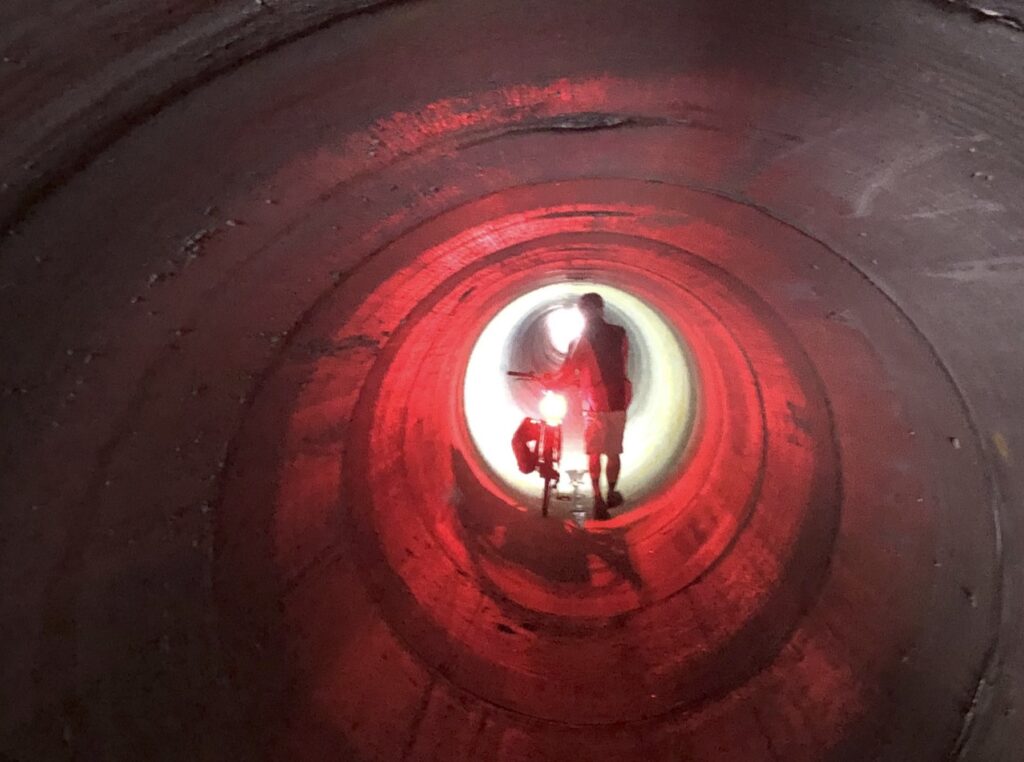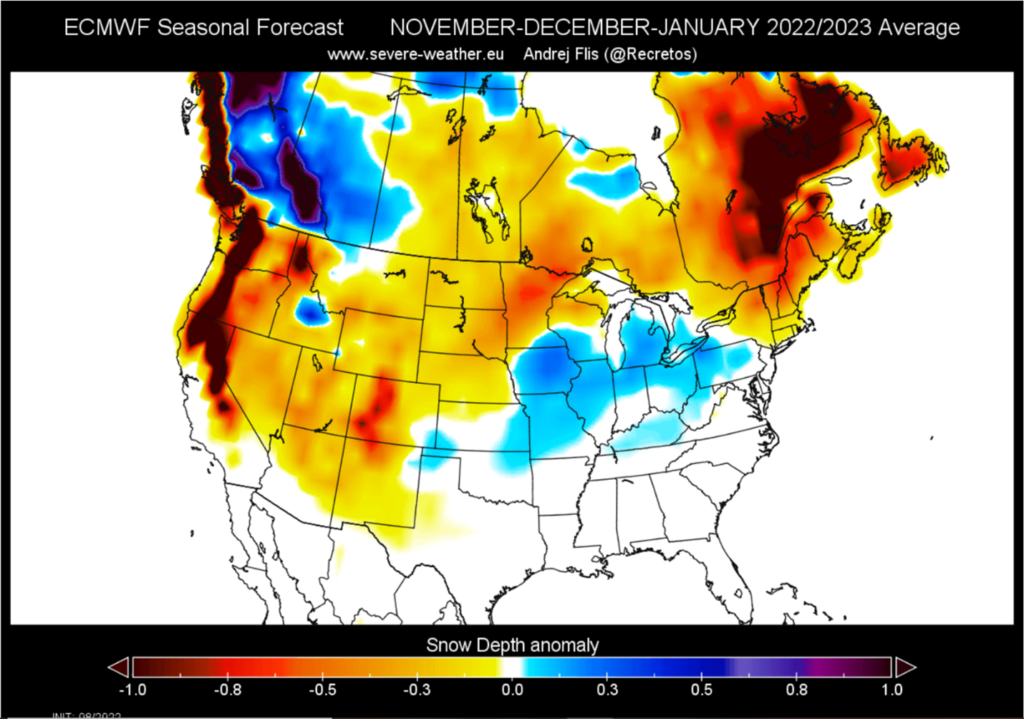By Eric Kuhn and John Fleck
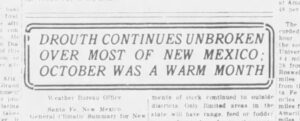
In the leadup to the final compact negotiations, the weather in Santa Fe had been dry. Santa Fe New Mexican, Nov. 11, 1922
With the arrival of all of the commissioners and their key advisors, the Commission got back together on Saturday morning. The purpose of this meeting had been agreed to back in early April. Each commissioner would be given the opportunity to suggest the form of a compact. Nevada’s James Scrugham suggested they go by state alphabetical order.
What followed represents a remarkable turning point in the history of the Colorado River Basin, with echoes still reverberating today.
How should the water be divided?
How should the basin be governed going forward?
How much water did they actually have to work with?
The seven states, in alphabetical order
Arizona’s Winfield Norviel went first. Norviel suggested a compact based on the application of prior appropriation on a basin-wide basis – for a limited, but unspecified period. He suggested existing rights would not be impacted, shortages should be shared on an equitable basis, and that exports out of the basin would be prohibited except for a specified amount for Colorado and Utah. Importantly Norviel suggested a three-member commission appointed by the president that would investigate disputes and determine if water was being wasted for non-economic purposes. This echoed a proposal Norviel had made at the commission’s first meeting back in January.
California’s McClure passed but suggested one of his associates might make a proposal later. It was then the turn of Delph Carpenter, Colorado’s representative.
The two-basin solution
Carpenter proposed that the beneficial consumptive use of the river be split between two basins – the moment when this monumental foundation of the river’s management, which had been first proposed by Reclamation’s Arthur Powell Davis, began to move from vague idea to concrete plan.
Carpenter referred to them as the Upper and Lower Regions, with the dividing line at Lee’s Ferry, Arizona. He proposed the split be based on the average annual flow of 17.4 million acre-feet per year from gage record at Yuma, Arizona, which is below the confluence of the Gila and Colorado Rivers. Using this gage record would give each basin 8.7 million acre-feet per year. Carpenter believed that 14% of the river’s total flow, or 2.436 million, came from tributaries below Lee’s Ferry, therefore the upper states would have to provide 62.64 million acre-feet every ten years at Lee Ferry (8.7- 2.436=6.264). Under Carpenter’s compact, each division (basin) would be responsible for 50% of a future treaty delivery obligation to Mexico. He proposed that power generation uses would be subservient to domestic and irrigation uses. Fundamental to his approach was that after a compact dividing the water between two regions was signed, the individual states in each region would get together and divide each region’s water among themselves.
Utah’s R.E Caldwell then presented his proposed compact. It was like Carpenter’s. It would divide the river into two basins at Lee’s Ferry. Prior Appropriation would generally control the river, except the Lower’ Basin’s “senior” rights at Lee’s Ferry would be limited to six million acre-feet per year (the ten-year obligation would be 60 million acre-feet, almost the same as Carpenter). Caldwell also suggested that the Upper Basin would need a reservoir of six million acre-feet above Lee’s Ferry to make his compact work.
After Caldwell presented his suggestion, Wyoming’s Emerson, Nevada’s Scrugham, and New Mexico’s Steven Davis weighed in. Scrugham indicated that he would be OK with a compact between two basins. Emerson was on the fence; he could live with either option. Davis, however, still preferred the Commission apportion water among the seven states.
California’s McClure then asked the Commission to listen to a suggestion made by advisor George Hoodenpyl, a water attorney from Long Beach, California. He suggested a compact based on dividing the use of the waters 50/50 at Lee’s Ferry, all present uses would be protected, and each basin would cede control of future development to the federal government. After clarifying that his suggestion was his and not California’s, he went on to explain that he believed the federal government was the one entity that could make decisions for the good of the region as a whole.
The commissioners then had a general discussion of what they had heard. Norviel and Carpenter dominated the discussion. Norviel believed that a 50/50 split at Lee’s Ferry would not provide enough water for the lower river. Carpenter indicated that he was now totally convinced a compact dividing water among seven states would be unworkable. He also indicated his strong opposition to the formation of a “super-agency.”
Locking in a fateful mistake – Reclamation’s overestimate of the river’s flow
Toward the end of the meeting, Reclamation’s Davis reviewed his agency’s data on water flows and water use in the basin. His main source was the Fall-Davis Report, which had been published in February. Davis told the commission that his estimate of the water available at Lee’s Ferry was 16.5 million acre-feet per year – crucially ignoring the work of the US Geological Survey’s E.C. LaRue, who (as we wrote in our book Science Be Dammed) since 1916 had been trying to warn the West’s leaders that the gage record was insufficient, ignoring known droughts in the 1800s.
LaRue had offered his services to Hoover, to attend and contribute to the Compact’s development. In a fateful decision that echoes through Colorado River history, LaRue’s offer was ignored.
Davis indicated that the losses between Lee’s Ferry and Laguna Dam were a little bit more than the inflows. The estimated flow at Laguna Dam was 16.4 million acre-feet per year, based on the Fall-Davis report. He estimated that present and future uses in the Upper Basin would total about 6.5 million acre-feet annually. In the Lower Basin, it was about 7.2-7.4 million acre-feet.
As the Commissioners ended their marathon meeting, they were still split over whether they should proceed with a two-basin or seven-state split. They decided to adjourn until 8 PM on Sunday evening.
.

